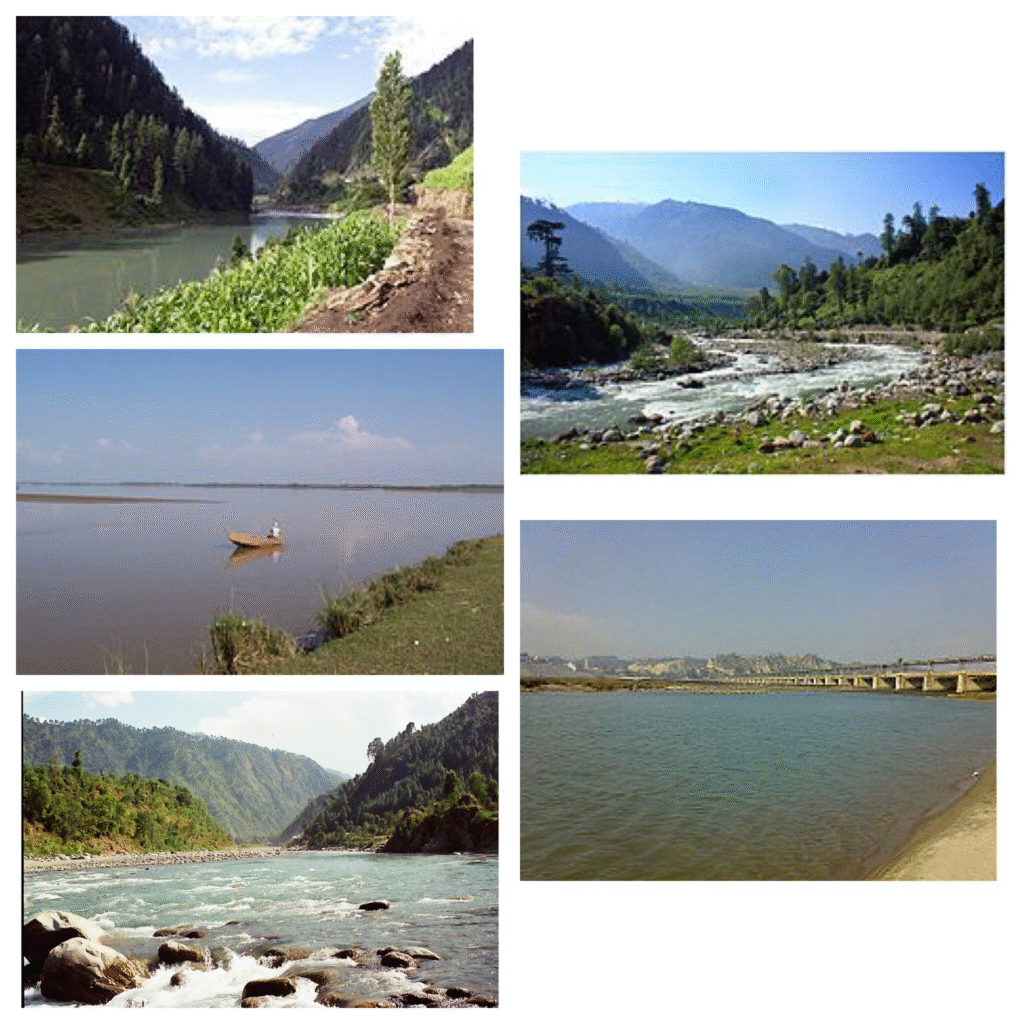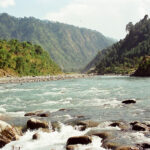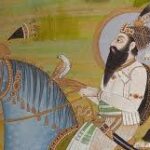Today, let’s dive into the story of Punjab’s five rivers. Punjab, meaning “Land of Five Rivers,” is a vibrant state in North India, celebrated for its fertile lands, deep-rooted history, and rich cultural legacy. At the heart of this region lie five mighty rivers that have shaped its identity, economy, and way of life. In this journey, we’ll explore these rivers, their historical roots, and their enduring impact on Punjab’s people.

The Beas River
Originating from the Beas Kund in the Himalayas, the Beas is the easternmost of Punjab’s five rivers. Stretching about 470 km, it eventually merges with the Sutlej in Punjab. More than just a waterway, the Beas holds spiritual and cultural significance, mentioned in ancient scriptures and revered by locals for its life-giving waters.
The Chenab River
Formed by the union of the Chandra and Bhaga rivers in Himachal Pradesh, the Chenab is one of Punjab’s largest rivers. Cutting through rugged terrain, it descends into Punjab’s plains near Akhnoor. Historically, the Chenab has been a natural barrier, witnessing countless invasions and shaping the region’s defense strategies.
The Jhelum River
Born from the Verinag Spring in Kashmir, the Jhelum winds through the valley before reaching Punjab’s western plains, where it meets the Chenab. Beyond its role in ancient trade and defense, the Jhelum remains a lifeline, transforming arid lands into fertile fields and sustaining Punjab’s agricultural wealth.

The Ravi River
Emerging from the Himalayas in Himachal Pradesh, the Ravi flows through picturesque valleys before marking the border between India and Pakistan. Near Trimmu, it joins the Chenab. Steeped in history, the Ravi finds mention in ancient poetry and texts, embodying the region’s cultural depth.
The Sutlej River
The westernmost of Punjab’s rivers, the Sutlej begins at Tibet’s Lake Manasarovar. Entering Punjab near Bhakra, it nourishes cities like Ludhiana and Faridkot before merging with the Beas. A powerhouse in every sense, the Sutlej fuels hydroelectric projects and drives the region’s progress.
Together, the Beas, Chenab, Jhelum, Ravi, and Sutlej are more than just rivers—they are Punjab’s lifeblood. They sustain agriculture, power industries, and embody the resilience and heritage of its people. From ancient times to today, these waters continue to shape Punjab’s destiny, proving that their significance runs as deep as their currents.








